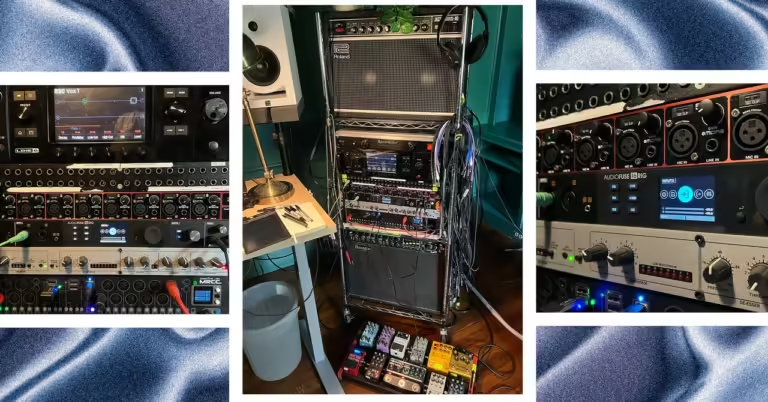for a long time When music equipment manufacturers made audio interfaces, they assumed that most people on the market only cared about plugging as many microphones into their computers as possible. For a long time, the market was dominated by interfaces that might have a few 1/4-inch inputs on the front for “instruments,” but devoted the majority of their space to inputs with mic preamps and XLR jacks, and went unquestioned or challenged. What about the Baby Boomer gearhead with a rack of vintage preamps and no desire to color his signal with cheesy Guitar Center-grade circuitry? Or the synth nerd who needs a hassle-free hub for the many twisty paths of modular goodness?
Some of the most innovative gear answers questions that haven’t been asked, and Arturia has been leading the way on these issues for nearly a decade. Best known for its durable MIDI controllers and Behringer-beating, budget-priced synthesizers, the French company made a splash by entering the crowded audio interface market with its AudioFuse series. These durable, stylish little boxes make it easy for recording artists of all genres to capture their ideas, and they’re priced just right between the cheap junk that abounds on Amazon and the “prosumer” studio centerpieces from flashier brands like Audient and Universal Audio. The addition of a USB hub port for connecting devices like USB MIDI controllers, keyboards, and other common peripherals was a “why didn’t someone think of this sooner” moment that I’ll never forget. For now, the MiniFuse 2 ($122) is my favorite interface for quick and easy iPad-based audio production.
As Arturia moves upmarket with the AudioFuse 16Rig, it’s answering another important question that no one is asking: Would anyone pay $1,299 for a rackmount interface that trades in preamps for an astounding number of inputs and outputs? A month of using the 16 inputs and eight outputs provided by this 1U routing and workflow dynamo has convinced me the answer is a resounding “yes.”
Photo: Pete Cotell
Audio Infusion
Patience and spontaneity are the yin and yang of lo-fi bedroom musicians and respected producers alike. Creativity can strike at any time, but it requires a great deal of prep work beforehand to ensure the process of sitting down and hitting record is as smooth as possible.
I spent a few afternoons routing a pedalboard full of Line 6 Helix, HX Effects, synths, and effects from brands like Chase Bliss and Walrus Audio to the AudioFuse’s various inputs and outputs via a basic patchbay, and it took me less than an hour to figure out how the included software gave me a “set it and forget it” setup that was always ready to go.
The software is relatively straightforward, with predictable layouts and functionality built into the I/O, Mixer and Routing Matrix pages. The Mixer page starts out empty and you need to “add” channels to it to make it active. It took some getting used to, but if you use the DAW regularly, this page, and the I/O page, will quickly become second nature.
Photo: Pete Cotell

